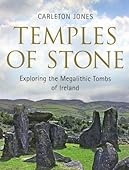<< News >> Gorham's Cave (Gibraltar)
Submitted by Thorgrim on Thursday, 19 February 2009 Page Views: 12647
Natural PlacesCountry: Spain Type: Cave or Rock ShelterInternal Links:
Archaeologists working deep inside Gorham’s Cave, Gibraltar have discovered a rare prehistoric painting, that could be up to 13,000 years old, of a deer. To the untrained eye it looks like a series of random scrawls on the cave wall. But with the help of the experts, the outline of an animal crowned with a distinctive set of antlers quickly becomes clearly discernible.
The discovery of the painting follows the previous find of cave art in St Michael’s Cave and highlights the wealth of archaeological remains in Gibraltar.
Alongside the painting, the archaeologists working in Gorham’s Cave have also made important Neanderthal finds during the past two weeks.
“The surprises seem to come one after another each year,” said Professor Clive Finlayson, director of the Gibraltar Museum and co-director of the excavation at Gorham’s Cave.
“What we have now in Gibraltar are eight caves where we know there has been Neanderthal occupation.”
“We also have a number of caves with occupation by modern people, of which at least two have cave art, which is of great heritage value in global terms.”
“This makes Gibraltar one of those unique places for the study of prehistory and for this rich heritage.”
“Certainly in terms of Neanderthal occupation sites, for a peninsula this size to have eight is unique in the world.”
“There is no other place like that,” he concluded.
Of the recent discoveries at Gorham’s Cave, the cave painting of the deer is perhaps the most significant.
From its style, the experts working in the cave can tell that it is an Upper Paleolithic painting from the Magdalenian period, making it approximately 12,000 to 13,000 years old.
Full report at http://www.chronicle.gi/.
Note: Biodiversity Hotspot Enabled Neanderthals To Survive Longer In S-East Of Spain. Finds in Gorham's Cave, Gilbraltar.
<< Site older than Moenjodaro found in Sukkur
Cherokees Want All Artifacts Removed From Airport Development Path >>






 We would like to know more about this location. Please feel free to add a brief description and any relevant information in your own language.
We would like to know more about this location. Please feel free to add a brief description and any relevant information in your own language. Wir möchten mehr über diese Stätte erfahren. Bitte zögern Sie nicht, eine kurze Beschreibung und relevante Informationen in Deutsch hinzuzufügen.
Wir möchten mehr über diese Stätte erfahren. Bitte zögern Sie nicht, eine kurze Beschreibung und relevante Informationen in Deutsch hinzuzufügen. Nous aimerions en savoir encore un peu sur les lieux. S'il vous plaît n'hesitez pas à ajouter une courte description et tous les renseignements pertinents dans votre propre langue.
Nous aimerions en savoir encore un peu sur les lieux. S'il vous plaît n'hesitez pas à ajouter une courte description et tous les renseignements pertinents dans votre propre langue. Quisieramos informarnos un poco más de las lugares. No dude en añadir una breve descripción y otros datos relevantes en su propio idioma.
Quisieramos informarnos un poco más de las lugares. No dude en añadir una breve descripción y otros datos relevantes en su propio idioma.